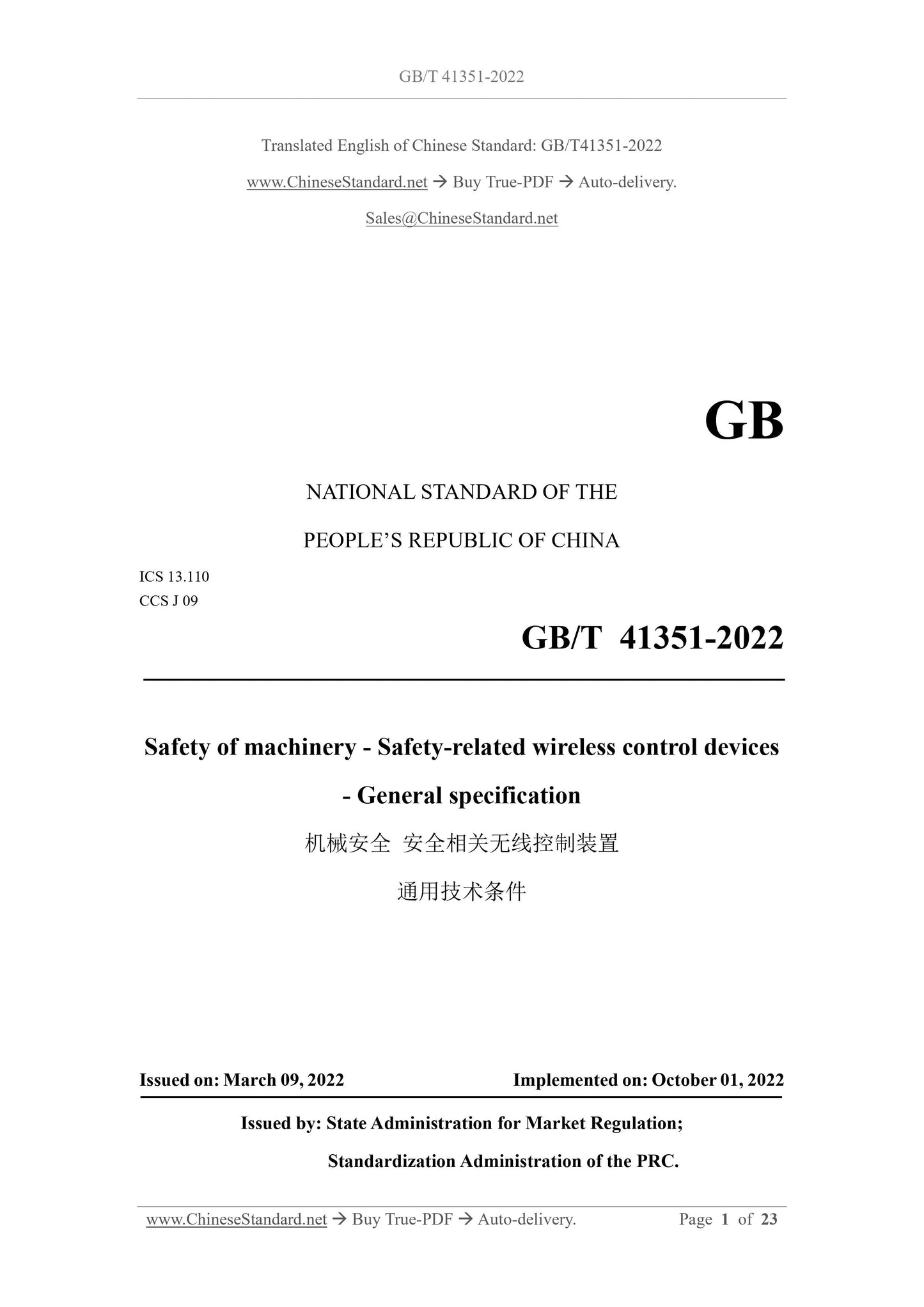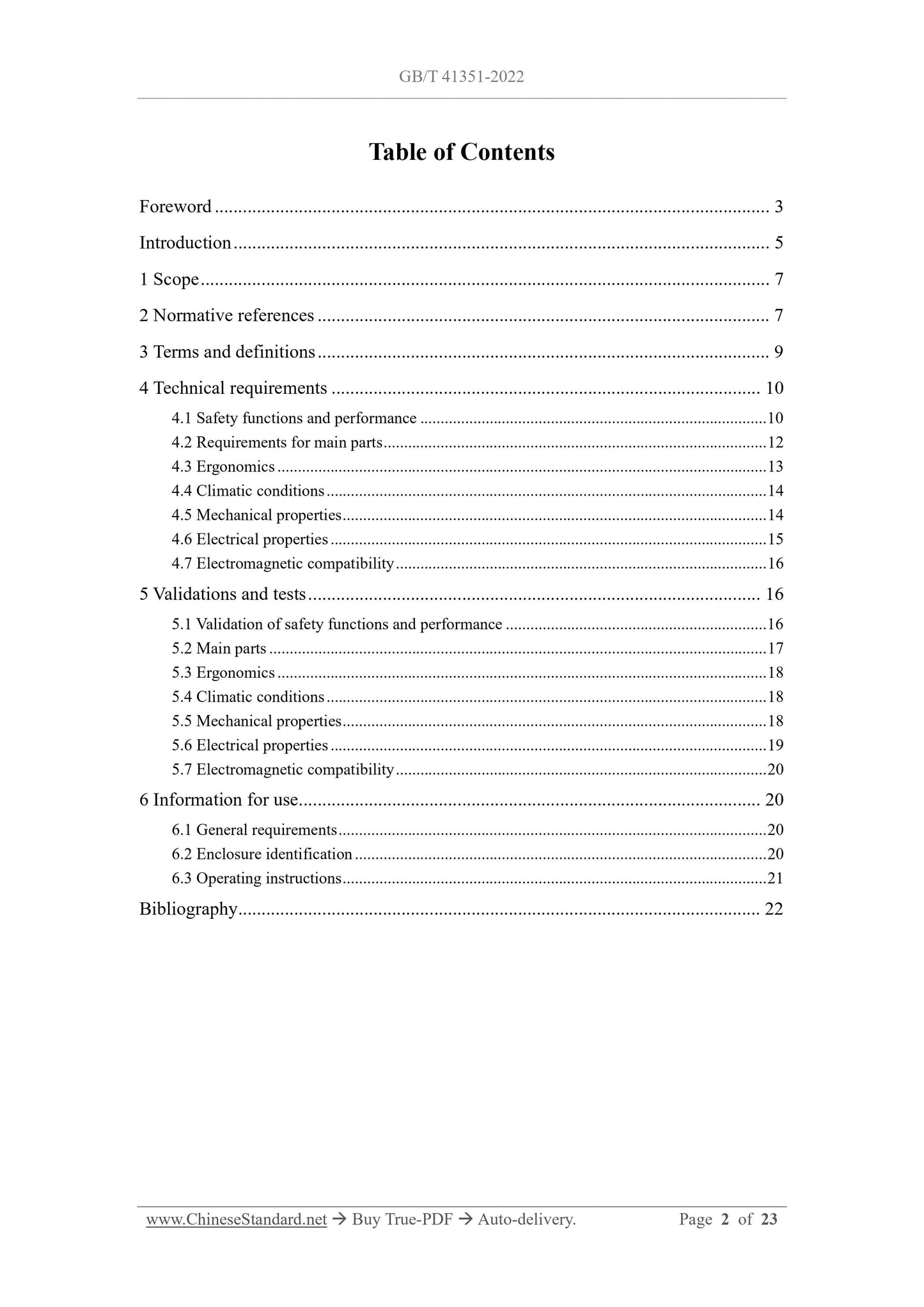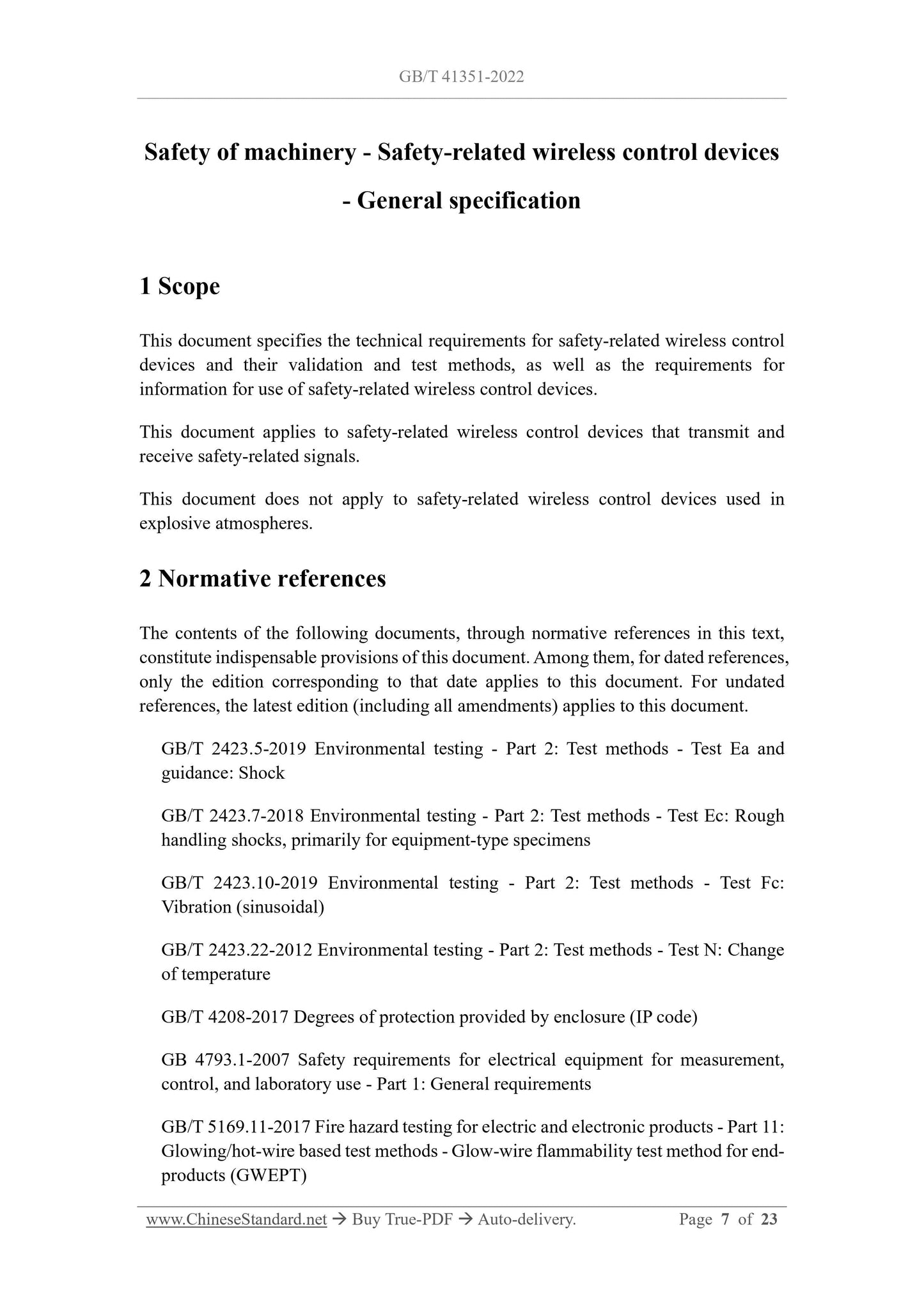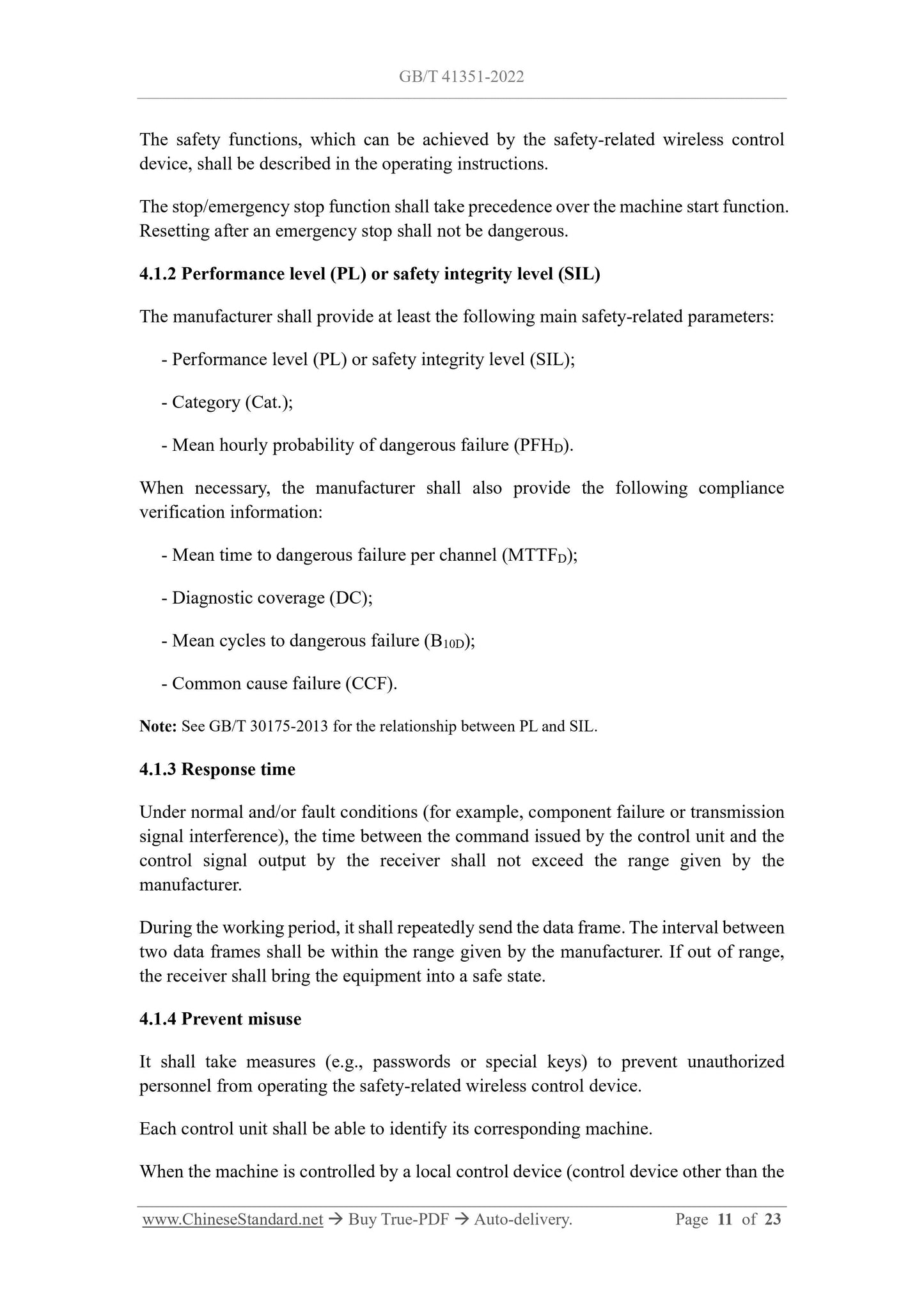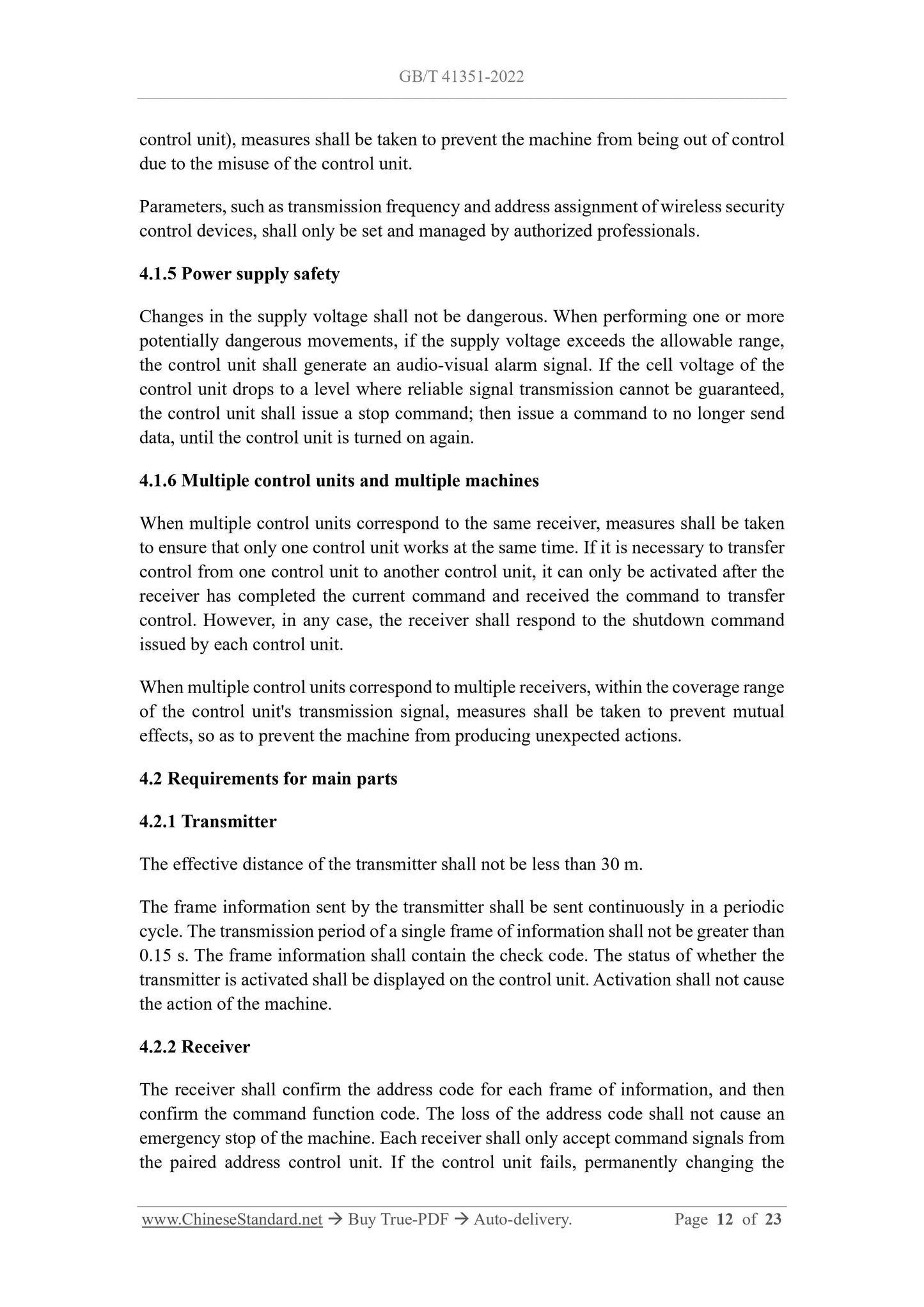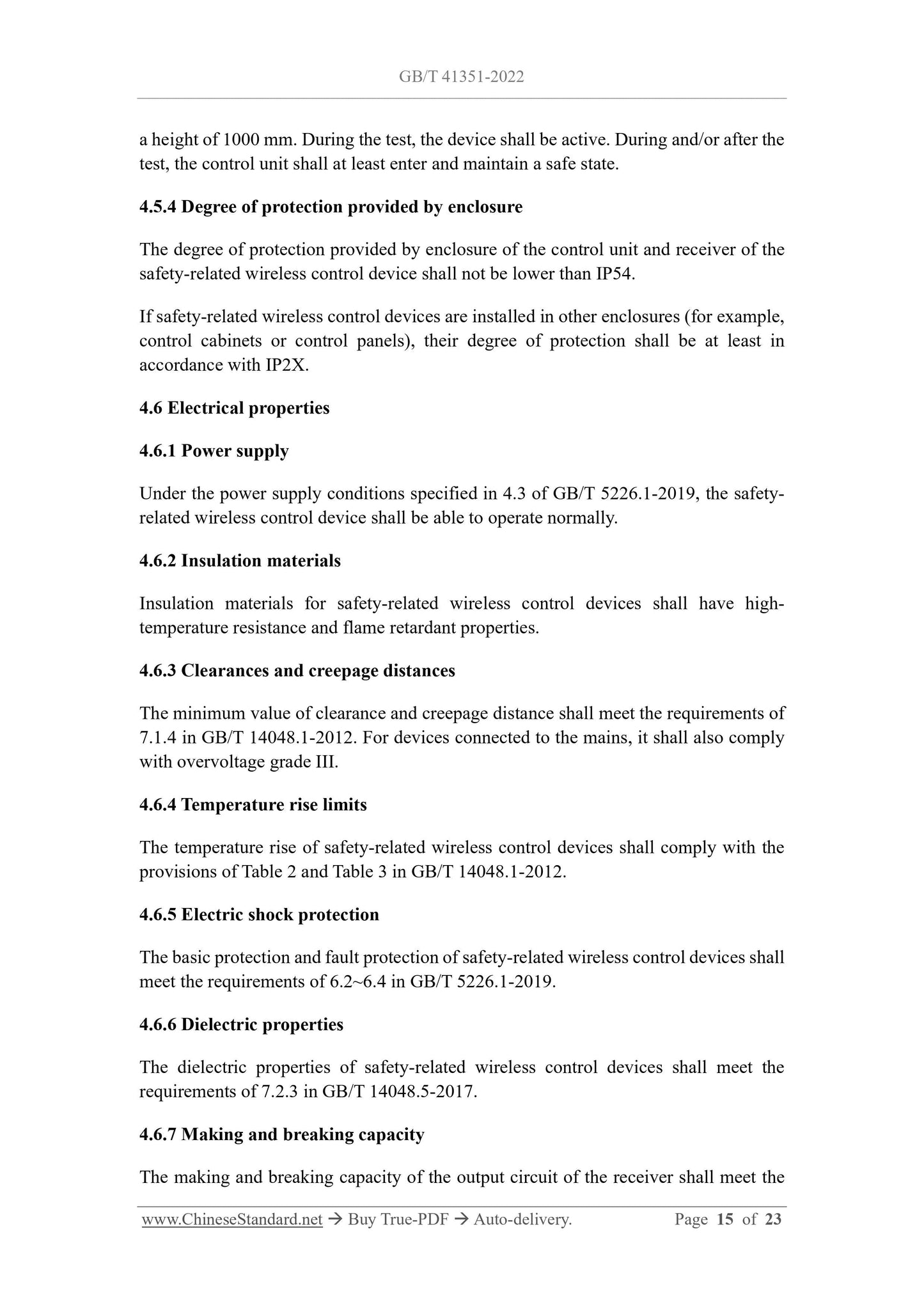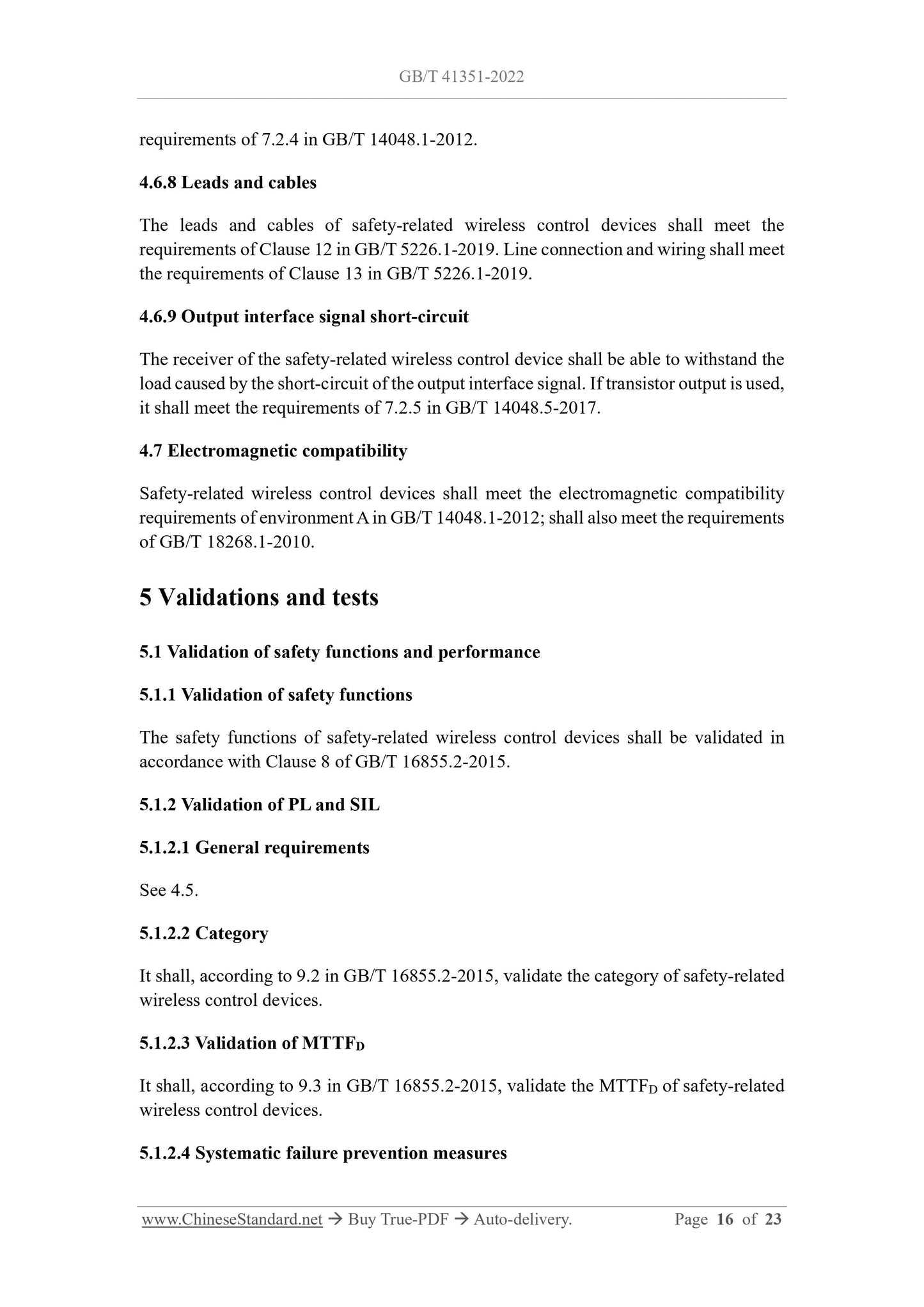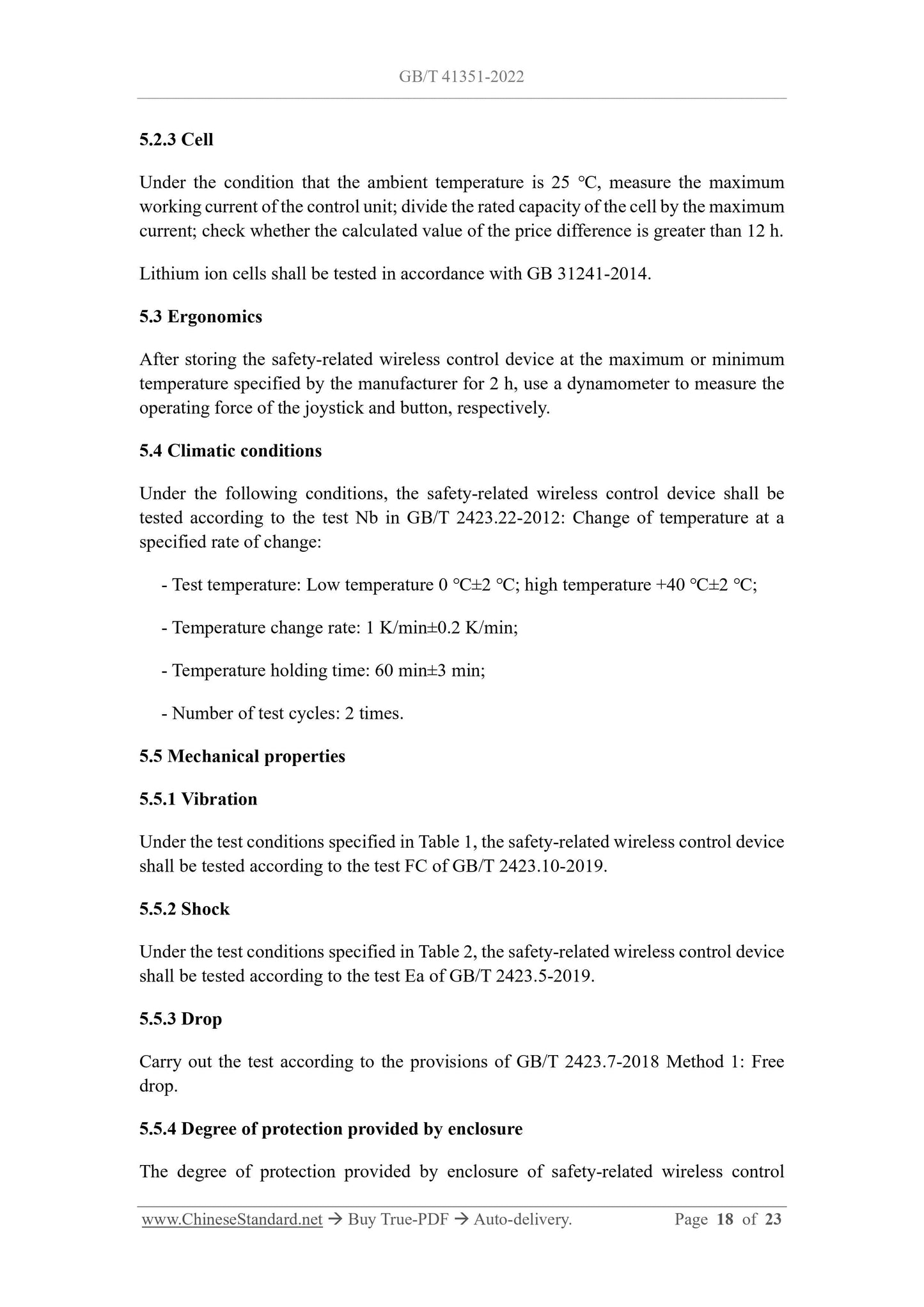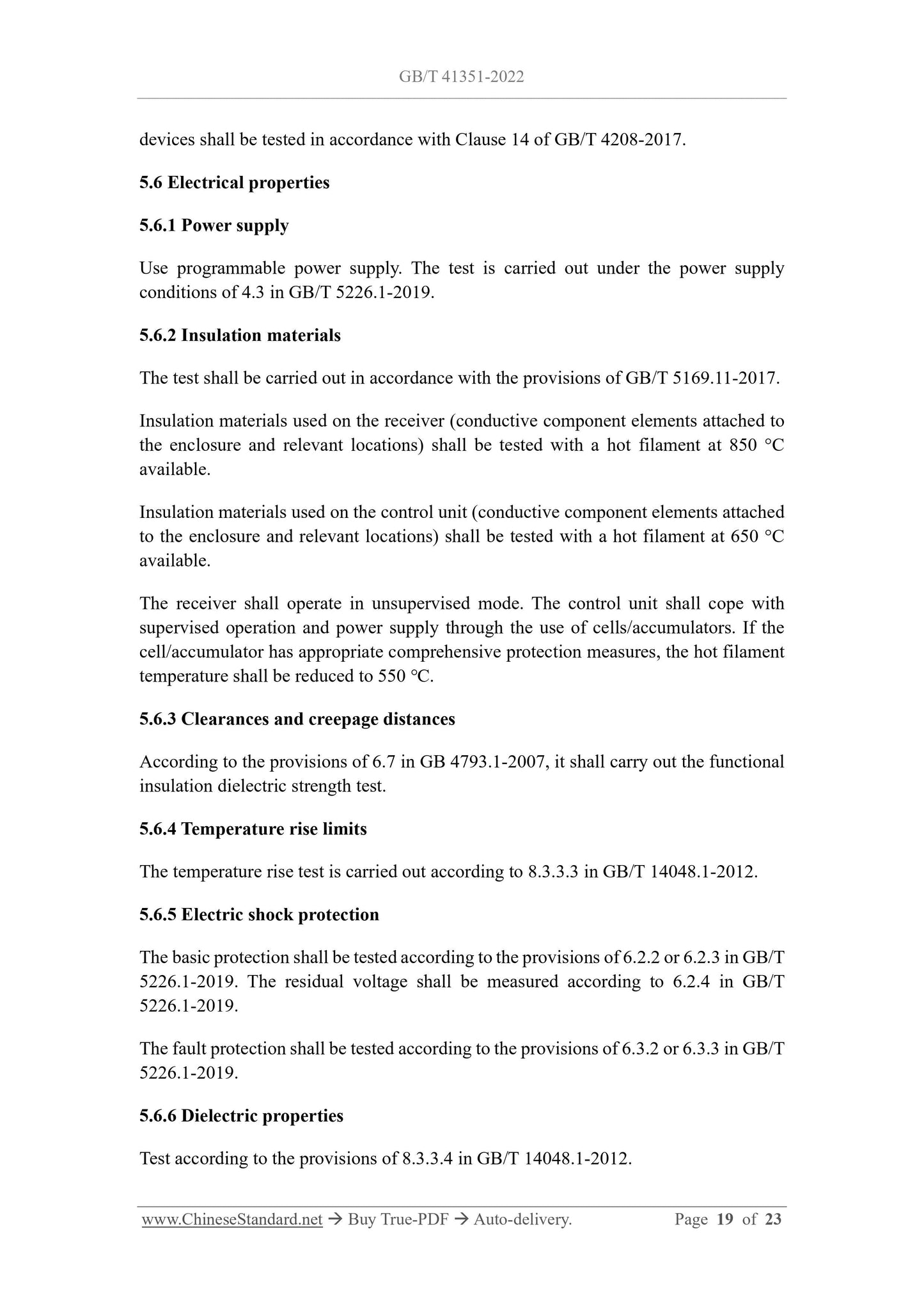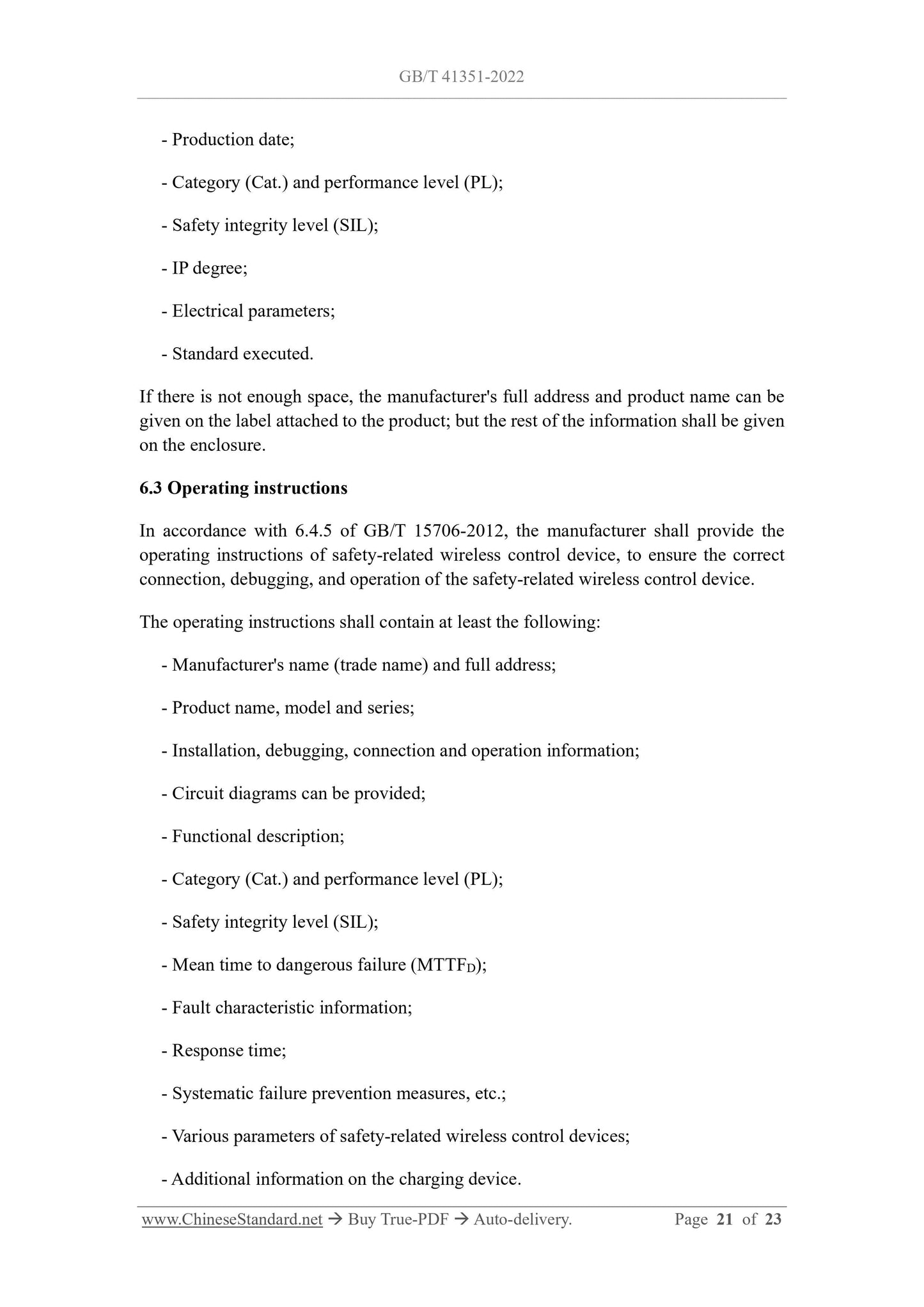1
/
of
10
www.ChineseStandard.us -- Field Test Asia Pte. Ltd.
GB/T 41351-2022 English PDF (GB/T41351-2022)
GB/T 41351-2022 English PDF (GB/T41351-2022)
Regular price
$230.00
Regular price
Sale price
$230.00
Unit price
/
per
Shipping calculated at checkout.
Couldn't load pickup availability
GB/T 41351-2022: Safety of machinery - Safety-related wireless control devices - General specification
Delivery: 9 seconds. Download (and Email) true-PDF + Invoice.Get Quotation: Click GB/T 41351-2022 (Self-service in 1-minute)
Newer / historical versions: GB/T 41351-2022
Preview True-PDF
Scope
This document specifies the technical requirements for safety-related wireless controldevices and their validation and test methods, as well as the requirements for
information for use of safety-related wireless control devices.
This document applies to safety-related wireless control devices that transmit and
receive safety-related signals.
This document does not apply to safety-related wireless control devices used in
explosive atmospheres.
Basic Data
| Standard ID | GB/T 41351-2022 (GB/T41351-2022) |
| Description (Translated English) | Safety of machinery - Safety-related wireless control devices - General specification |
| Sector / Industry | National Standard (Recommended) |
| Classification of Chinese Standard | J09 |
| Word Count Estimation | 15,148 |
| Issuing agency(ies) | State Administration for Market Regulation, China National Standardization Administration |
Share
